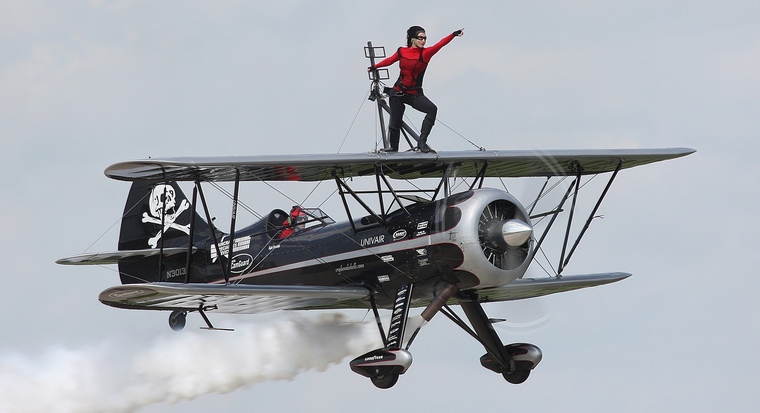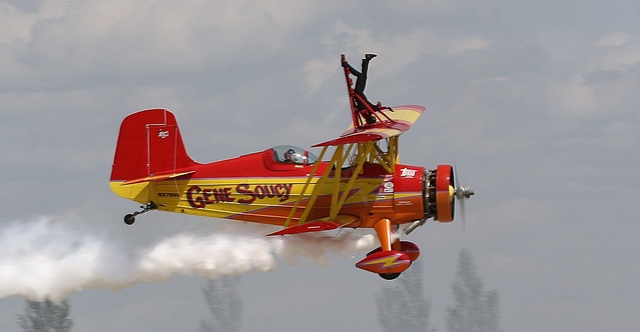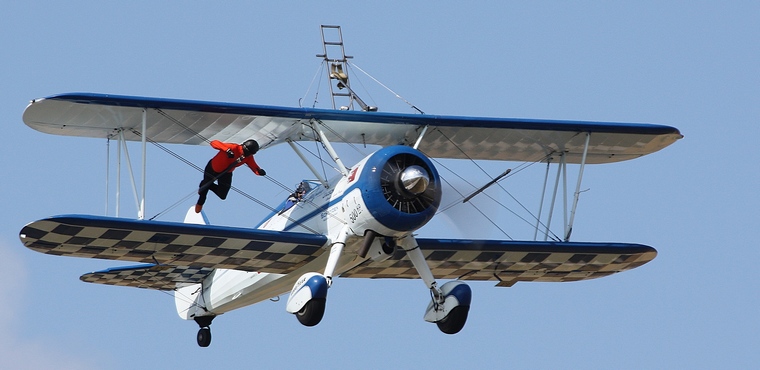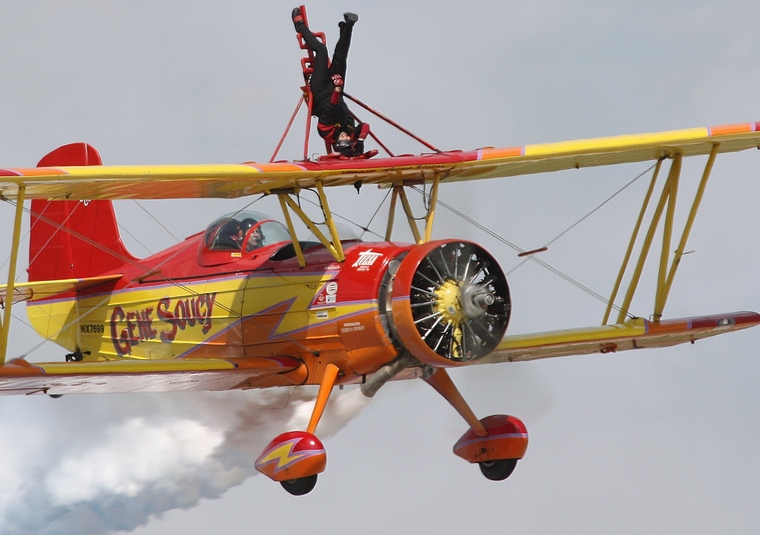Wing Walking and the golden age of Aviation
By Willie Bodenstein
Say Wing Walking and ones mind immediately goes back to the golden age of aviation and daring young men and woman in noisy Bi-planes performing death defying stunts that leaves one in awe.
Wing Walking was born when one Ormer Locklear a 26-year-old USA Army Air Service Pilot Cadet during a flight test much to the bewilderment of his flight instructor left the cockpit of his Jenny Bi-plane and climbed onto the wing to see some communication signalled to him which he had to interpret to pass his flight test. Ormer passed his flight test though his instructor was not amused. On another occasion he again left the cockpit to tighten a radiator cap that has come loose and once even fixed a sparkplug lead in flight.

Farfetched as this may be today in the early years of aviation it was quite common for the flight engineer to fix problems during flight. In fact the first in-flight refuelling was done when one Wesley May in 1921 left one aircraft and with a tank strapped to his back made his way to another and so performed the first ever plane to plane transfer of fuel.
After the end of the Second World War Ormer and many other young highly talented pilots found themselves with no prospects of employment and to earn a living they set about showing their skills by performing daring acts at county fairs or wherever the prospect of a paying audience presented itself and so the Barnstormers were born. These daring young men and later woman visited small communities and often using a farmer's field as a landing strip for a fee entertained the local populace who flocked to see the acts of bravado and at times sheer stupidity. The more audacious the act the more customers it drew and the better the prospect of earning a living was and thus these fearless performers always had to be inventive to keep the spectators coming back for more. So legend has it, on the 8 November 1918 Ormer performed the first public act of Wing Walking to an astonished crowd at Baron Field. Texas.

People flocked to see the young ex Air Corps Lieutenant whose motto was 'Safety second” and he soon had a huge following and was firmly established as the King of Wing Walkers earning as much as $3,000 per day, a kings ransom in those days. Ormer had no death wish though and when asked why he did what he did he replied: “I do it to show what can be done. Somebody has got to show the way we will all be flying someday and the more things are attempted and accomplished, the quicker we will get there. Ormer is credited with developing most of the stunts used in wing walking and today he is widely recognised by his peers as the father of aerobatic flying.
Not to be outdone, others followed and Wing Walking was soon a must at any event and those that practised the art boastfully proclaimed that they were paid for the prospect of the spectators possibly seeing someone die. And those that indeed went to see just such a gruesome happening were often not disappointed as eight Wing Walkers met their fate between 1918 and 1920. Ormer himself died a mere two years later in 1920 whilst performing a stunt during a film shoot.

The parachute opened more opportunities for even more daring stunts but the dashing young Lieutenant never performed any, the master of that was a then unknown Charles Lindberg who started as a wing walker and whose signature act was a double parachute jump. Strapping two parachutes onto his back he would open the one and then to the horror of the skyward gazing crowd would cut it away and only at the last possible moment open the second chute to land safely.
But as in every performance those that do not innovate would soon found themselves out of favour and so the way was paved for a new breed of performer, the fairer sex. To keep the interest and the crowds coming and of consequence the money rolling in woman were soon recruited and the first woman to switch aircraft in the air was Ethel Dare whilst Mabel Cody, a niece of Buffalo Bill Cody, was the first woman to leave a speeding boat and climb onto a plane flying perilously close to it.

But all good things came to a pass and in 1936 the US Government passed laws that spelled the end to the macabre art of Wing Walking. All displays below 460 meters were banned, effectively making it almost impossible for those that flocked to the gatherings to see their heroes performing the death defying stunts. The death knell came when regulations were passed requiring those that still performed to pay exorbitant insurance premiums. The thrill was gone and those that for so long entertained millions could no longer afford to do so and by 1960 only a handful of performers still remained. Today the number of practitioners of the art can be counted on ones fingers.
|
    |























